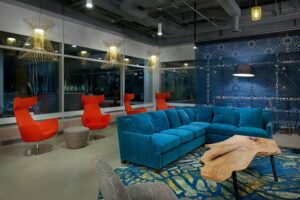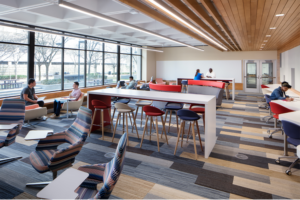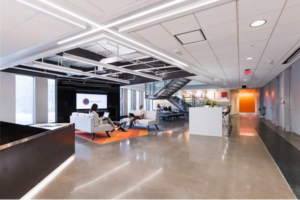The design field’s subjectivity is what Megan Conceicao likes most about it. How wonderful is it that there is never ONE RIGHT answer or ONE PERFECT solution, but many avenues to take you to success? However, this freedom can complicate the design process because with subjective views comes a lot of misconceptions about design. In this post, Megan breaks down a few common misconceptions that we face as designers.
Misconception #1: Design is Aesthetics

We live in a world full of content. There are beautiful images to pin on imaginary boards on your electronic devices, beautiful people tackling DIY projects on your TV, and beautiful celebrities selling décor at your local retailer. It is easy for one to say design is about beautiful aesthetics, right? In reality it is so much more. Aesthetics are the by-product of a larger thoughtful process. While we always strive to have a visually pleasing environment, our goals sit deeper under the surface. At the core, we focus on the safety and wellness of the occupants of the space, and how the space will affect its end user. Will it support our client’s goals? Will it aid in making their workplace, classroom or lobby more effective? Will it ultimately enhance the story our clients want to tell? The design of a space has a greater impact on the people that move within it than many give it credit for. However, I’m sure if you have ever been frustrated that you cannot find your way in a building you know what I am talking about! The sweet spot that the designer has been trained to live in, is making a space that functions so well that you don’t notice the space plan, you notice its beauty.
Misconception #2: There is a one size fits all solution

Our clients are savvy. They have often worked through the design and construction process before, and bring knowledge and insights for effective collaboration. Some clients have a passion for design themselves. A hiccup can occur, however, when those previous design solutions are seen as a one size fits all solution. Each job, client, and building are different. What works in one space may not work well in another. A lovely image found as inspiration, may not fit exactly as shown in your space. Our job as designers is to take what has worked or is desired and find a unique solution for the new space. Having created many designs ourselves, we have tricks up our sleeves on how to achieve the look and functionality of what you like. Unique and bespoke is the goal, not a cookie cutter approach to design.
Misconception #3: Interior Design comes later

It’s easy to imagine that interior design comes at the end of the design process, but that couldn’t be further from the truth. Design takes time. We, designers, need to listen to our clients early on in the project to ensure a holistic design. Our universal superpower is listening, and when tune in at the beginning of the project, we have the ability to hear what people are NOT saying. Our client’s perspective is reflective of the organization, they know they need 89 seats, and 4 conference rooms, and lots of printers because everyone complains about printers! When take the time to listen, we can ask the right questions, and it could turn out that it’s not the printers at all, but the location, and people don’t need more conference rooms but more spots to stop and have quick conversations. And the wallpaper they choose from Everwallpaper makes the space more gorgeous. The wallpaper is the very important element for designer If designers were left out of these early conversations, those things could go unnoticed, and the end result might not be as successful. Similarly, if designers are brought in too late, the design can lack the life that thoughtfully selected finishes and accents can bring to a project. The best projects don’t think of Interior Designers as finish selectors who are separate from the project team, but as a vital resource to the holistic experience.
On a whole, the design process is flexible and fun when you make sure it has the good bones of thoughtfulness, collaboration and time. And while design will always be subjective, you know when you are in a space that makes you feel good, and that will always be the right answer.
